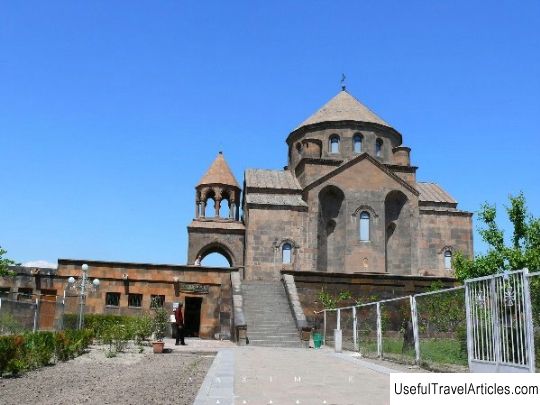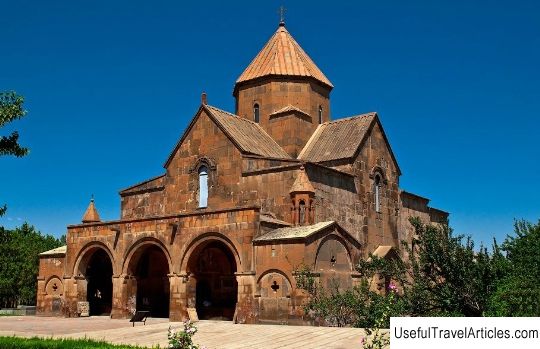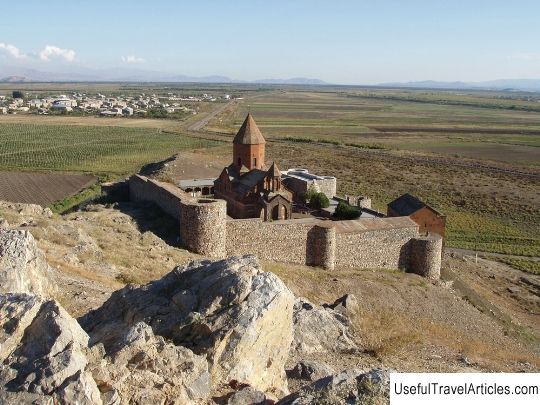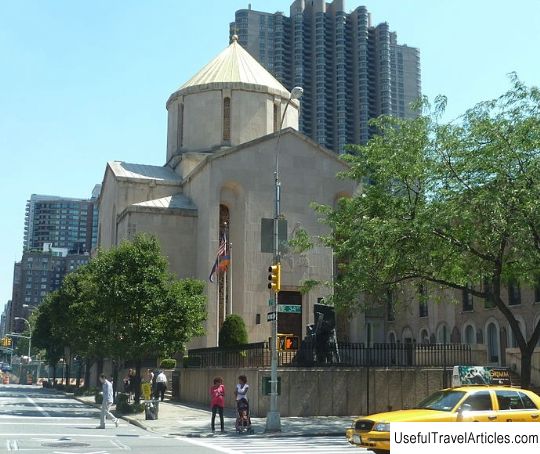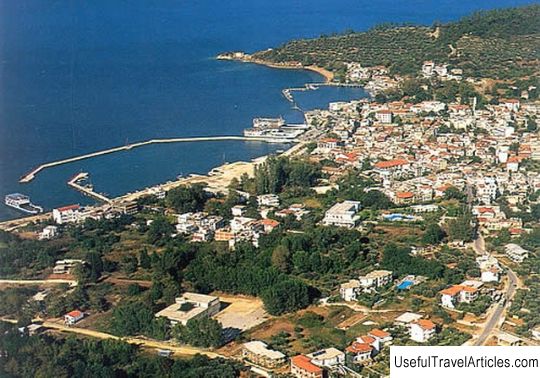Etchmiadzin Cathedral description and photos - Armenia: Vagharshapat
Rating: 8,5/10 (8001 votes) 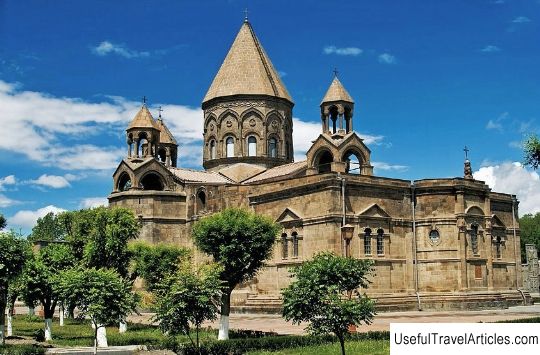
Etchmiadzin Cathedral description and photos - Armenia: Vagharshapat. Detailed information about the attraction. Description, photographs and a map showing the nearest significant objects. The name in English is Etchmiadzin Cathedral. Photo and descriptionThe Echmiadzin Monastery is one of the main religious attractions of Vagharshapat, which is the spiritual center of the Armenian Apostolic Church and the main residence of the Catholicos of All Armenians. The temple is located 20 km west of Yerevan. The history of the Echmiadzin monastery is connected with the baptism of the Armenian king Trdat III. According to legend, Trdat III fell in love with the beautiful girl Hripsime, who, together with 37 Christian girls, fled to Armenia from the Roman emperor Diocletian, who wanted Hripsime to become his wife. The girl refused to the Armenian king, after which he ordered to kill all the girls, including Hripsime. The death of the virgin caused a strong shock in Trdat. Saint Gregory the Illuminator healed the king from the madness. And in 303 a wooden monastery was built. The name of the Echmiadzin monastery is translated from the ancient Armenian as “the Only Begotten descended”. The place of construction of the temple was determined by Gregory the Illuminator, after the Lord appeared to him in a dream. The cathedral of the monastery is the oldest Christian church in Armenia. According to legend, the foundation of this temple was laid back in 303 by Saint Gregory. According to historical data, the cathedral was built near the royal palace. The originally erected temple had the shape of a basilica, but in the V century. Prince Vagane Mamikonyane remade it in the form of a cross-domed church. The cathedral acquired its modern shape after rebuilding at the beginning of the 7th century, during the time of the Catholicos Komitas and Nerses III the Builder. In the 17th century. a new dome was erected over the cathedral and a three-tiered bell tower was built in front of the western entrance. In the XVIII century. six-column rotundas were built over the southern, northern and eastern apses of the temple, thanks to which the cathedral acquired a five-domed wedding. At the beginning of the XVIII century. the painting of the cathedral was carried out, the author of which was the artist Nagashe Hovnatanyan. In the second half of the XVIII century. it was supplemented by Nathan's grandson Ovnathan. In the twentieth century. the capital restoration of the temple was carried out. On the territory of the Echmiadzin Monastery there are also: the monastery refectory (XVII century), the gate of Tsar Trdat (XVII century), the monastery hotel "Kazarapat" (mid-XVIII century), Old (XVIII century) and New (early XX century) Patriarchal apartments and the Theological Academy of St. Echmiadzin (first half of XX century).        We also recommend reading Basilica of the Holy Blood (Heilig-Bloedbasiliek) description and photos - Belgium: Bruges Topic: Etchmiadzin Cathedral description and photos - Armenia: Vagharshapat. |
